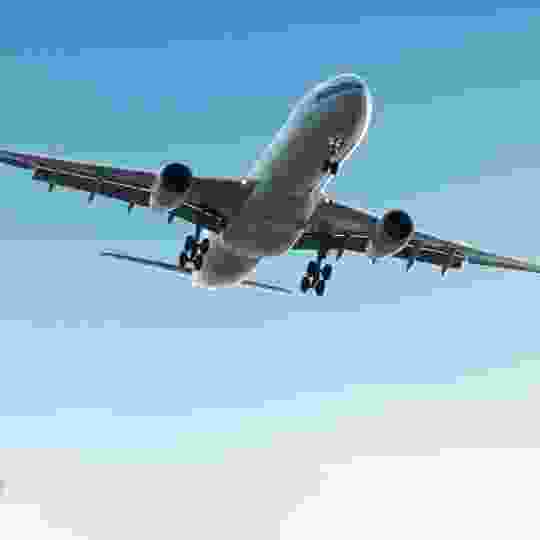This article discusses the Top 7 Tourist Attractions in Kenya. Kenya is nearly synonymous with the term “safari.” There are few places on Earth that evoke such a sense of adventure and romance. The variety of activities available in Kenya impresses visitors, with viewing the country’s abundant wildlife topping the list.
In the Maasai Mara, witness the Great Migration of wildebeest thundering across the savanna; get up close and personal with elephants in Amboseli; or marvel at Lake Nakuru, which is flecked with thousands of flamingos. Ancient tribes like the Maasai, Kikuyu, and Samburu maintain their traditional customs in these sun-drenched lands, living in relative harmony with the natural world.
A treasure trove of coastal treasures awaits beyond the world-famous safari parks. Snorkeling and diving on fish-rich coral reefs, relaxing on pearly beaches, experiencing the melting pot of cultures and cuisines in Mombasa and Malindi, and exploring tropical islands steeped in Swahili history are all options.
Kenya’s scenery is breathtaking. The country is divided by the Great Rift Valley, which is surrounded by calderas and mountain ranges. Climb the snow-capped equatorial peaks of Mount Kenya and fish for trout in crystal-clear streams to the east of this sweeping valley. Hell’s Gate National Park contains obsidian caves, natural geysers, and hot springs.
Visit Nairobi to experience the romance of Kenya’s colourful colonial history, as portrayed in the film Out of Africa. This vivacious capital serves as a gateway to one of the world’s most evocative and exciting travel destinations. With our list of the top tourist attractions, you can discover even more places to visit in Kenya.
Here are seven Kenyan tourist attractions:
1. National Reserve of Maasai Mara
The Maasai Mara National Reserve (also spelled “Maasai Mara”) is one of the most beautiful game reserves in Africa. The northern extension of the Serengeti, the Mara, borders Tanzania and acts as a wildlife corridor between the two countries.
It is named after the statuesque, red-clad Maasai people, who have lived and grazed their animals in the park for centuries. Mara means “mottled” in their language, possibly referring to the play of light and shadow from the acacia trees and cloud-studded skies above the vast grasslands.
The Great Migration, which occurs from July to October, involves thousands of wildebeest, zebra, and Thomson’s gazelle migrating to and from the Serengeti.
Hippos and crocodiles swarm in the Mara River. Due to its relatively large populations of lion, cheetah, and leopard, the park is also known for providing excellent predator sightings, particularly during the dry months of December through February. So travel the world, book a trip to Kenya or to any other country like Zambia . Live the best life you can.
2.Amboseli National Park
One of Kenya’s most popular tourist destinations is Amboseli National Reserve, which is crowned by Africa’s highest peak, Mount Kilimanjaro. The name “Amboseli” comes from the Maasai word for “salty dust,” which describes the park’s parched conditions perfectly.
The reserve is one of the best places in Africa to get up close and personal with large herds of elephants. The park is also home to lions and cheetahs, as well as giraffes, impalas, elands, waterbuck, gazelles, and over 600 bird species.
The five habitats to explore here include the dried-up bed of Lake Amboseli, wetlands with sulphur springs, savannah, and woodlands. Look for Maasai people who live in the park’s vicinity.
3. National Park of Tsavo East
Tsavo West and Tsavo East are two sections of Tsavo National Park in Kenya. These parks cover 4% of the total land area of the country and contain rivers, waterfalls, savannah, volcanic hills, a massive lava-rock plateau, and a diverse range of wildlife.
Tsavo East is well-known for its photogenic sightings of large elephant herds rolling in red dust. It is located halfway between Nairobi and Mombasa. The Galana River winds through the park, providing excellent game viewing opportunities as well as a lush contrast to the arid plains.
The Yatta Plateau, the world’s longest lava flow, Mudanda Rock, and the Lugard Falls, which cascade into rapids and crocodile-infested pools, are all highlights.
The topography of Tsavo West is wetter and more varied, with some of the park’s most beautiful scenery located in the park’s northern reaches. Mzima Springs, a series of natural springs with large populations of hippos and crocodiles; Chaimu Crater, an excellent location for viewing birds of prey; and Ngulia Rhino Sanctuary are among the highlights.
Because of the dense vegetation, wildlife is less visible in Tsavo West, but the breathtaking scenery more than makes up for it.
4. Samburu, Buffalo Springs, and Shaba Shaba National Reserves
The wildlife in all three reserves is dependent on the river’s waters to survive, and many species have adapted to the dry conditions. Grevy’s zebras, Somali ostriches, and gerenuks (a long-necked antelope that stands on two back legs to reach new shoots on upper tree limbs) are among them.
Samburu National Reserve’s Sarara Singing Wells are a popular attraction where Samburu warriors sing traditional songs while hauling water for their cattle to drink. You may also come across big cats and wild dogs.
5. Lake Nakuru National Park
Pink flamingos flock to Kenya’s Lake Nakuru National Park. The birds congregate at Lake Nakuru, one of the Rift Valley soda lakes that account for nearly one-third of the park’s total land area.
The park has recorded over 450 bird species as well as a diverse range of other wildlife since its inception in 1961. Among the animals you may see are lions, leopards, warthogs, waterbucks, pythons, and white rhinos, and the landscapes range from sweeping grasslands bordering the lake to rocky cliffs and woodland.
The park also protects Africa’s largest euphorbia candelabrum forest. These endemic tall, branching succulents add a textural element of interest to the arid landscape.
6 Lamu Island
Lamu, a small island northeast of Mombasa, has an enticing old-world charm. Lamu Old Town, a UNESCO World Heritage Site, is Kenya’s oldest continuously inhabited settlement, dating back to the 12th century.
One of the best things to do in this city is take a stroll through the city’s winding streets. The structures reflect the island’s long history of trade. Architectural elements from the Arab world, Europe, and India can be seen, but they are done in a distinct Swahili style. Wooden doors with intricate carvings, coral stone structures, hidden courtyards, verandas, and rooftop patios are all common features.
When you come here, it’s like going back in time. Dhows ply the harbour, there are few if any motorised vehicles. And donkeys rule the streets as they have for centuries. The majority of Lamu’s population is Muslim, and both men and women dress traditionally.
The Lamu Museum, which features exhibits on Swahili culture and the region’s nautical history. As well as the Lamu Fort and the Donkey Sanctuary, are among the island’s top attractions.
If all of the history bores you, relax on one of the island’s white-sand beaches or sip Arabic coffee in a local café.
7. Lake Naivasha
Lake Naivasha, the highest point of the Great Rift Valley, is a birder’s paradise. Over 400 bird species have been observed here, including African fish eagles, jacanas, white-fronted bee-eaters, and several kingfisher species.
Boating is a great way to see wildlife. Hippos play in the water, while giraffes, zebras, buffaloes, and eland graze along the lake’s edge. Colobus monkeys can be found in the trees as well.
The Crater Lake Game Sanctuary, located near Lake Naivasha, has a wildlife-rich nature trail.
Hell’s Gate National Park, located just south of Lake Naivasha, protects a diverse range of wildlife. And offers excellent climbing opportunities with two extinct volcanoes and the red cliffs of Hell’s Gate Gorge.
The former home of Joy Adamson, author of Born Free, and her husband George on the southern shore of Lake Naivasha. The Elsamere Conservation Centre, is open for a cup of tea.
It should be noted that Lake Naivasha has been known to shrink significantly. During times of extreme drought, and the area’s thriving floriculture industry has an impact on water levels and quality. In contrast, the lake is typically lush and alive.
Hope you like above article about Top 7 Tourist Attractions in Kenya.








